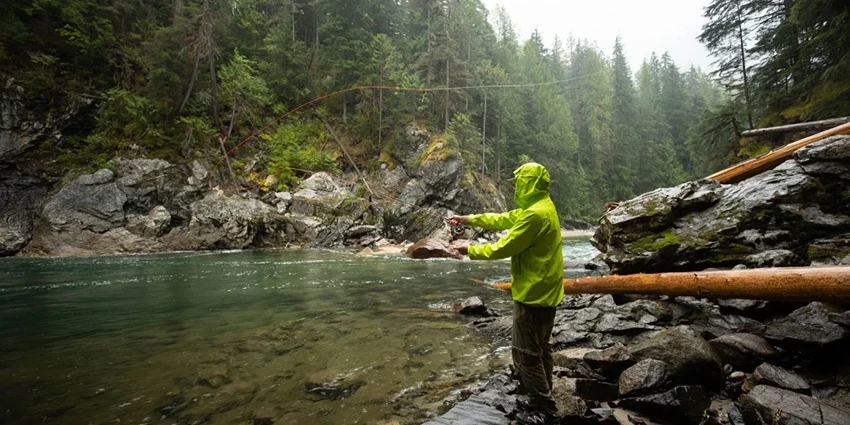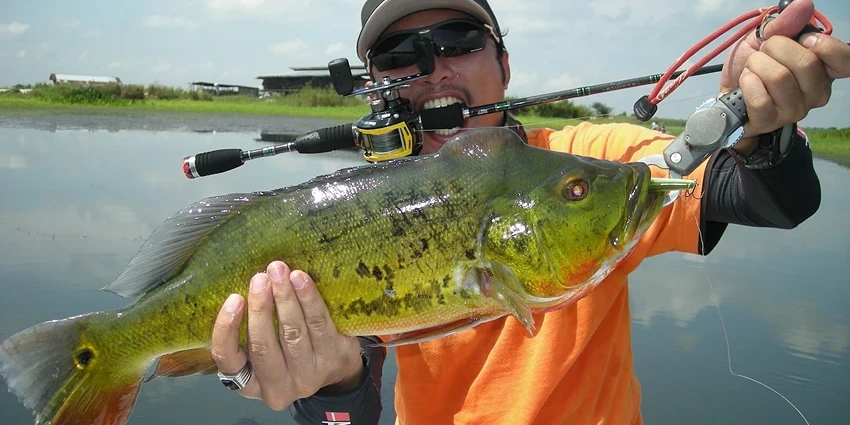All products were chosen independently by our editorial team. This review contains affiliate links and we may receive a commission for purchases made. Please read our affiliates FAQ page to find out more.
Fishing is not just a pastime; it’s an art that requires understanding, patience, and knowledge of the environment. The importance of fishing seasons cannot be overstated, as they significantly influence the behavior of fish, the strategies employed by anglers, and the overall success of fishing expeditions. Whether you’re a seasoned angler or a novice, knowing the best times to fish is crucial for a fruitful experience.
Jump to:
Key Takeaways
- Seasonal Patterns: Fish behavior changes with the seasons, affecting their feeding habits and location.
- Best Practices: Each season requires specific techniques and gear for successful fishing.
- Regional Variations: Fishing seasons can vary significantly by region, affecting the types of fish available.
Overview of Seasonal Fishing Patterns
The cycle of the seasons brings about significant changes in water temperatures, weather conditions, and daylight hours, all of which affect fish behavior and habitat. Understanding these patterns is essential for determining the best fishing seasons, ensuring not only a successful catch but also adherence to conservation practices.

Spring Fishing
Spring marks a period of renewal and activity in the aquatic world. As water temperatures rise, fish move from their winter habitats in search of food, making them more accessible to anglers. This season is particularly favorable for freshwater fishing, with species like bass, trout, and walleye becoming more active.
Summer Fishing
Summer offers abundant opportunities for both freshwater and saltwater fishing. However, the warmer temperatures can drive fish to deeper, cooler waters, requiring anglers to adjust their techniques. Night fishing becomes more popular during this season, taking advantage of cooler temperatures and active fish.
Fall Fishing
Fall is often hailed as the best fishing season by many anglers. Fish are actively feeding in preparation for the winter months, leading to some of the year’s most exciting fishing conditions. This season is ideal for targeting species like salmon and bass, as they are more likely to be found in shallow waters.
Winter Fishing
Winter presents unique challenges and opportunities for anglers, especially in regions where ice fishing is possible. While many fish slow down and move to deeper waters, species like pike and perch can still provide rewarding catches for those willing to brave the cold.
Spring Fishing
Early Spring: Transition and Tactics
Early spring is a transition period for fish as they start to move from their winter habitats towards spawning areas. This movement makes them more accessible and eager to feed, providing excellent opportunities for anglers. Key tactics during this time include using slower, more deliberate movements with lures and baits, as the fish are still adjusting to the changing temperatures.
Mid to Late Spring: Prime Time for Freshwater
As the season progresses and water temperatures continue to rise, freshwater fishing hits its peak. Fish become increasingly active, feeding heavily in preparation for spawning. This period is ideal for targeting species like bass, which are known for their aggressive pre-spawn behavior.
Spring Fishing Tips and Techniques
To maximize success during spring, anglers should focus on areas where fish are likely to spawn, such as shallow bays and river mouths. Using live bait can be particularly effective, as fish are looking to replenish energy lost during the winter. Additionally, paying attention to weather patterns and water temperatures can help in choosing the right time and place to fish.
Summer Fishing
Early Summer: Opportunities and Challenges
Early summer offers a continuation of the spring’s bountiful conditions, with warm temperatures and active fish. However, as the season progresses, the rising water temperatures can pose challenges, pushing fish to seek cooler, deeper waters. Anglers must adapt by targeting these deeper areas or focusing on early morning and late evening when temperatures are more favorable.
Mid to Late Summer: Deep Water Strategies
During the hottest months, deep water fishing becomes the key to success. Techniques such as trolling and deep-water jigging can be effective in targeting species that retreat to cooler depths. Additionally, summer storms can influence fish behavior, making it essential to monitor weather conditions closely.
Summer Fishing Gear and Baits
The right gear and bait are crucial for summer fishing success. Lighter lines and tackle are recommended for clear, shallow waters, while heavier gear may be needed for deep-water fishing. Live baits, such as worms and minnows, are effective in attracting fish during the summer, as are artificial lures that mimic the appearance and movement of prey.
Fall Fishing

Early Fall: Feeding Frenzy
Early fall sees fish entering a feeding frenzy as they prepare for the winter months. This period is characterized by aggressive feeding behavior, making it an excellent time for anglers to target large, hungry fish. Focusing on areas where fish are likely to feed, such as near fallen trees or weed beds, can increase the chances of a successful catch.
Mid to Late Fall: Targeting Migratory Species
As the season progresses, migratory species such as salmon begin their journey upstream to spawn. This migration offers unique opportunities for anglers to catch these fish in rivers and streams. Techniques such as fly fishing and casting with spinners can be particularly effective during this time.
Fall Fishing Techniques and Lures
Fall fishing requires a mix of techniques and lures to adapt to the changing conditions and behaviors of fish. Topwater lures can be effective in the early fall, while deeper diving lures may be more successful as fish move to cooler waters. Additionally, using baits that mimic the natural prey of the fish, such as insects and smaller fish, can increase the chances of a catch.
Winter Fishing
Early Winter: Slow Down and Strategize
The onset of winter marks a slowdown in fish activity, as colder temperatures reduce their metabolism and feeding habits. Anglers must adjust their strategies accordingly, focusing on slow, precise movements and targeting areas where fish are likely to congregate, such as deep pools in rivers and lakes.
Mid to Late Winter: Ice Fishing Adventures
In regions where ice fishing is possible, mid to late winter offers a unique fishing experience. This period requires specialized gear, including ice augers and shelters, and techniques such as jigging to attract fish beneath the ice. Safety is paramount during ice fishing, making it essential to check ice conditions before venturing out.
Winter Fishing Safety and Gear
Winter fishing, particularly ice fishing, requires careful attention to safety and the right gear. Essential items include insulated clothing, ice cleats, and safety equipment such as ice picks and flotation devices. Additionally, using sonar or underwater cameras can help locate fish beneath the ice, increasing the chances of a successful outing.
Regional Fishing Seasons
North America’s Best Fishing Seasons
In North America, the best fishing seasons vary by region and species. The northern states offer excellent ice fishing opportunities in the winter, while the southern states provide year-round fishing in warmer climates. Spring and fall are generally the best times for freshwater fishing across the continent, with species such as bass and trout being particularly active.
Europe’s Prime Fishing Times
Europe offers a diverse range of fishing opportunities, from the salmon runs in Scandinavian rivers to the warm-water fishing in the Mediterranean. Spring and autumn are the prime seasons for freshwater fishing, while summer offers the best conditions for saltwater fishing along the coast.
Tropical Destinations: Year-Round Opportunities
Tropical destinations offer year-round fishing opportunities, with the seasons influencing the types of fish available rather than the overall fishing conditions. In these regions, anglers can target a wide range of species, from bonefish and tarpon to marlin and tuna, depending on the time of year.

Regional Fishing Seasons: A Closer Look
While the previous sections provided a general overview of fishing seasons across the United States, let’s delve deeper into the specifics with a couple of valuable tables that highlight peak fishing times for various species and regions.
Table 1: Peak Fishing Seasons by Species in the United States
| Species | Spring | Summer | Fall | Winter |
| Bass | High | Medium | High | Low |
| Trout | High | High | High | Medium |
| Salmon | Medium | Low | High | Low |
| Catfish | Medium | High | High | Medium |
| Walleye | High | Medium | High | Low |
*High indicates peak activity, Medium indicates moderate activity, and Low indicates minimal activity.
Table 2: Best Fishing Destinations by Season
| Season | Destination | Target Species |
| Spring | Great Lakes, MI | Bass, Walleye |
| Summer | Florida Keys, FL | Tarpon, Bonefish |
| Fall | Columbia River, OR/WA | Salmon |
| Winter | Lake Champlain, VT/NY | Pike, Perch (Ice) |
These tables offer a snapshot of the best times and places to fish for popular species in the United States, providing anglers with valuable insights for planning their fishing adventures.
Register for our latest in-depth reviews and product round-ups from the experts
Enter your email address below to receive our twice monthly reviews emails.
By entering your details, you are agreeing to our terms and conditions and privacy policy. You can unsubscribe at any time.
FAQs: Navigating the Seasons of Fishing
The best time of day for fishing generally falls during the early morning and late evening hours. These periods offer cooler temperatures and more active fish feeding patterns. Specifically, the hours just after sunrise and just before sunset are prime times for anglers to cast their lines.
Weather conditions play a significant role in fishing success. Changes in barometric pressure, temperature, and weather fronts can all influence fish behavior. For instance, a sudden drop in pressure before a storm may increase fish activity, while high pressure and clear skies might slow them down. Adapting your fishing strategy to these conditions can enhance your chances of a catch.
Yes, fishing can be enjoyed year-round, but the strategies, gear, and target species will vary depending on the season. Each season offers unique opportunities and challenges, from ice fishing in winter to pursuing migratory species in spring and fall. Understanding the seasonal patterns and behaviors of fish is key to successful year-round fishing.
Martin Cochran, renowned for his expertise in deep-sea fishing and marine wildlife, plays a pivotal role at Fresh Catch Daily. His adventures across various oceans have equipped him with unique insights and techniques, enriching our platform with diverse and engaging content for fishing enthusiasts.







